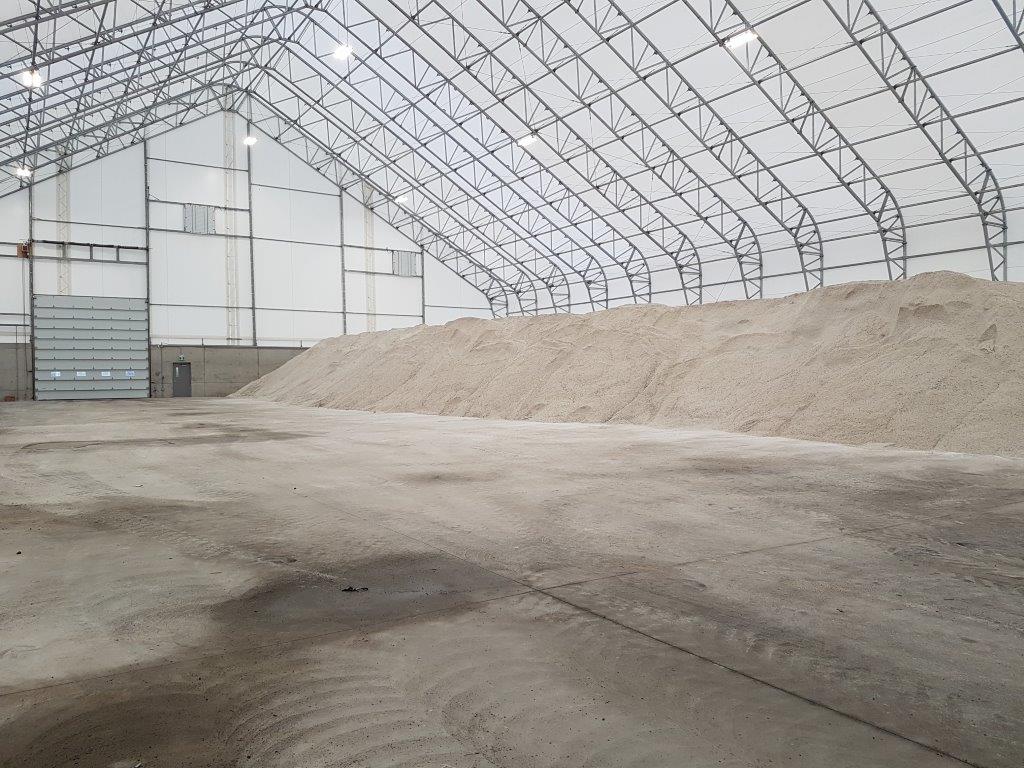By: Robert Lee
Each building design and structural concept offers unique advantages and obstacles that consumers should consider prior to purchase. Poly fabric and tension fabric buildings are no exception. Our buildings provide versatility and considerable advantages over conventional construction, yet it is important that you look at the basics of our buildings and design concepts so that you can more clearly see those advantages.
Fabric structures are as varied as a wood frame or post and frame conventional buildings. Yet, tension fabric buildings involve common “building blocks,” and the terminology used in describing these components requires clarification so that consumers may more easily decide upon their specific application preferences.
Fabric Structures Sections
There are three primary sections to a standard fabric structure: the base or foundation, the skeleton, and the coverings. The base or foundation anchors the building to the ground and provides a solid base for the unit. The skeleton can consist of timber, steel, plastic or aluminum, or, in some instances, fibreglass or graphite (in smaller, more portable units and mobius-ball type units).
The fabric may be actual fabric, mesh, or films, usually with a poly, vinyl, Teflon, or PVC coating. The uniqueness of these structures comes primarily from the lightweight yet durable fabric, stretched and providing tension to the entire building. Wood structures, on the other hand, are compression-type construction units.
The footing need not anchor the building to the ground, some of these buildings are truly portable, consisting of a steel or aluminum platform frame on wheels, allowing them to be moved about. Commonly, the skeleton is anchored into concrete footings or pads, enabling the installation of a complete flooring system. Less common is the use of pressure-treated timber foundations and even metal screw piles, particularly in soils that shift due to moisture or that are prone to frost heaving.
Modern Fabric Structures
Today’s fabric structures usually rely on an aluminum structure that acts like ribbing to hold the fabric tightly. In corrosive environments, workers often treat the aluminum with a plastic or vinyl coating to further resist rusting and deterioration. These ribs, trusses, and base plates form the skeleton of tension-fabric (also known as poly-fabric) buildings and require rigid adherence to high engineering standards.
Often, the skin or fabric is made so that the ribs and trusses are pocketing into the design, making them stronger, longer-lived, and aesthetically satisfying. This canopy generally sees the greatest variation in quality. To be able to choose the best material for your application, it is imperative to understand the basics of the most common materials used.
PVC Polyesters
Many of the PVC or polymer skins consist of a woven fabric treated with various topcoats. Industry workers commonly use canvas structures for event venues, equipment shelters, and so on. They generally can be deconstructed and reassembled more easily than the polyfabrics, yet are waterproof and fire-retardant. PVC-laminated polyesters involve a weave of fabric coated and strengthened with vinyl films. Their strength comes from the denier, or size of filament used in the weave, as well as the number of these filaments.
Much like a twisted cable versus single cable system used in suspended bridges, the weave provides strength and support for the fabric, while the layer or top-coating provides additional strength, UV protection, and protection against moisture, mildew, and chemicals. The quality of the poly-fabric can vary as readily as the gauge of steel or aluminum used in the construction of other buildings or asphalt in roofing applications. Nonetheless, this tension-fabric design, with the proper skeleton and fabric combination, can span several hundred feet, where conventional construction would require substantially more materials and structural design.
Fabric Structures Strength
Intuitively, fabric structures might seem more prone to destruction by storms, high wind, and harsh weather than conventional buildings, but, due to their design, this is untrue. The tension imparts immense internal strength, while the flowing design like that of an eggshell, provides consistent integrity that sheds wind, snow, and rain. Consider the original tension-fabric building — the Mongolian yurt —which withstands the most violent winds of the Himalayas, because of its curved design. Most fabric structures provide that same advantage.
The three components of the tension-fabric building – foundation, skeleton, and fabric – all combine to provide a uniquely cost-efficient and utilitarian building, readily adaptable to a multitude of uses.




